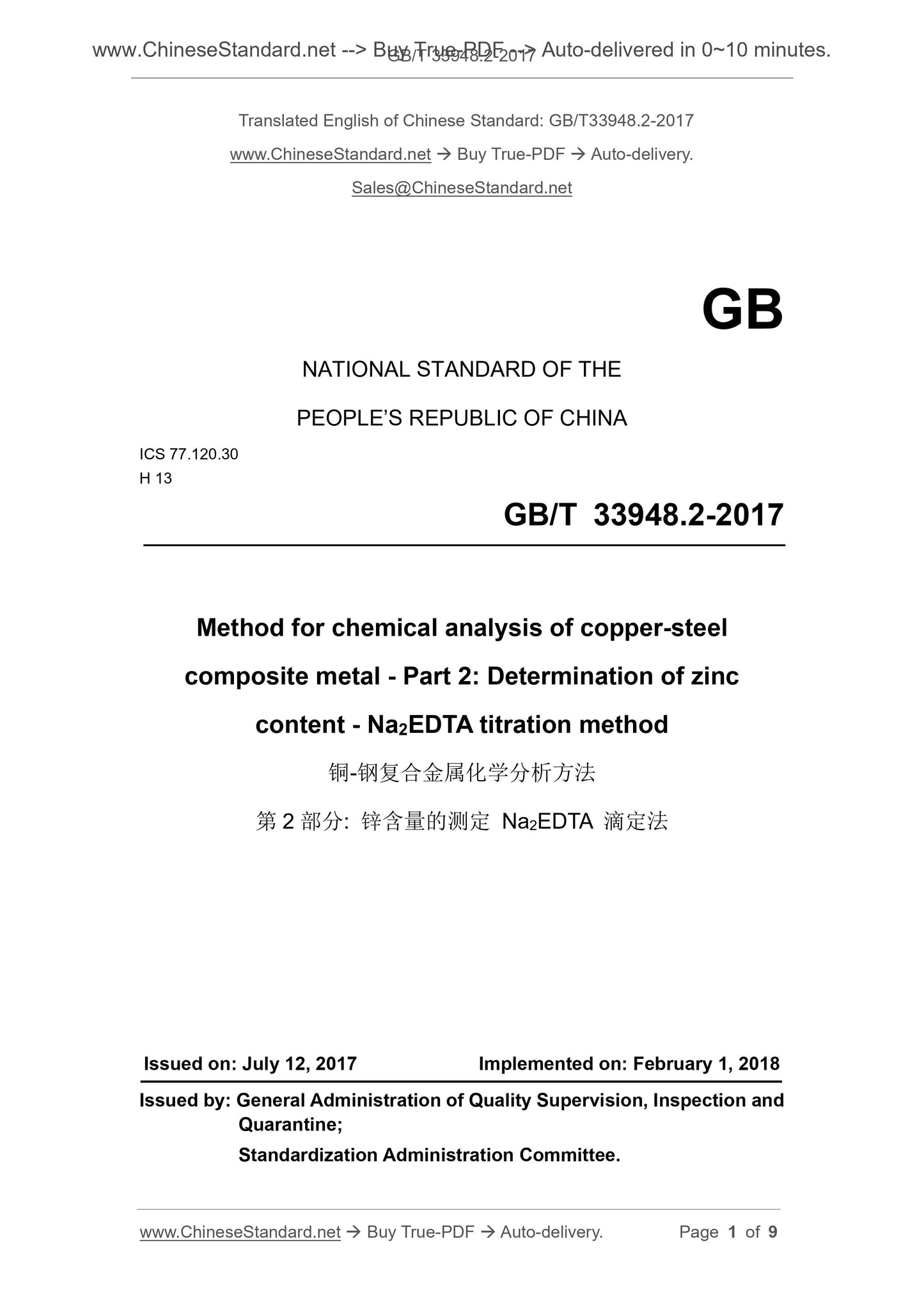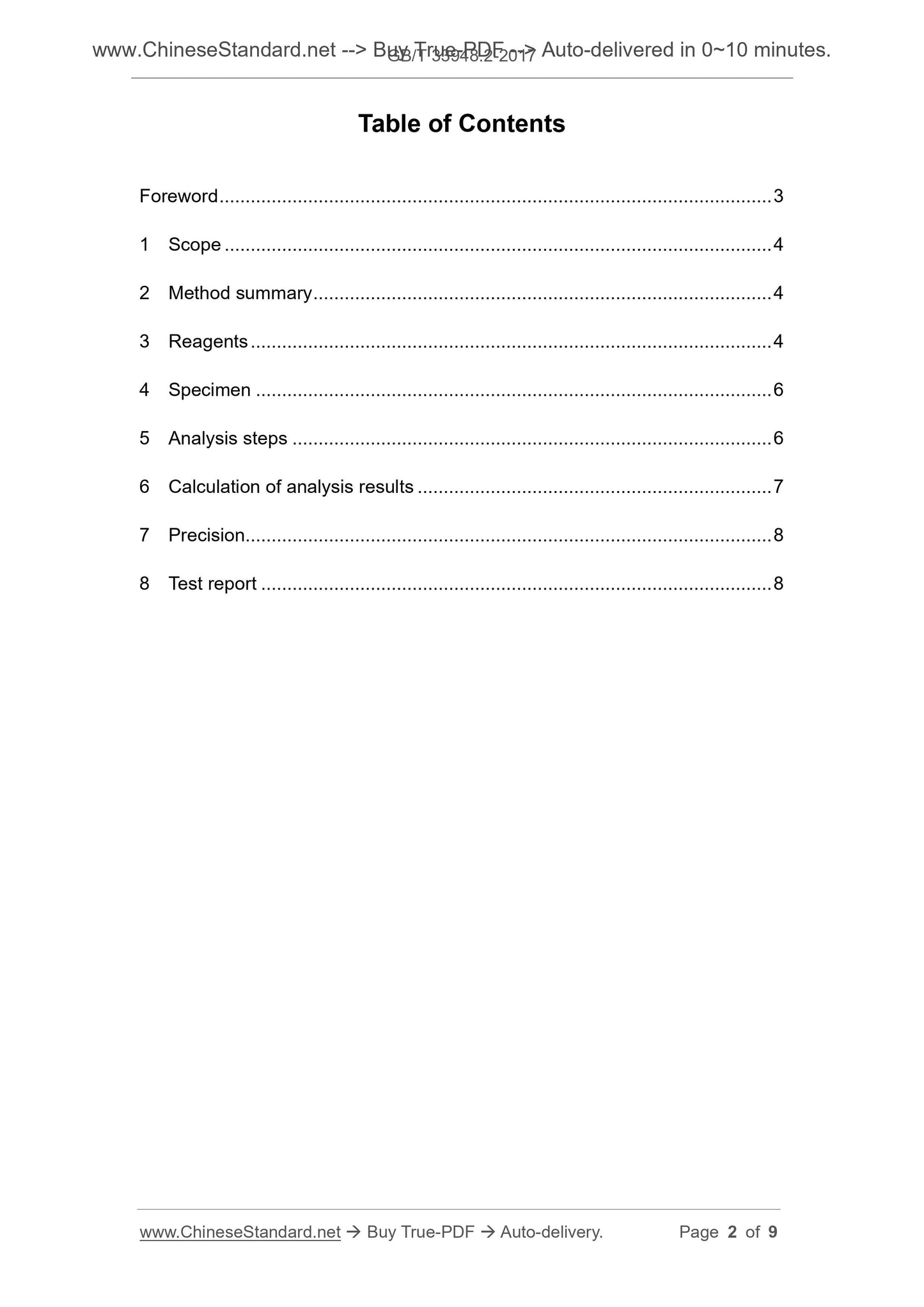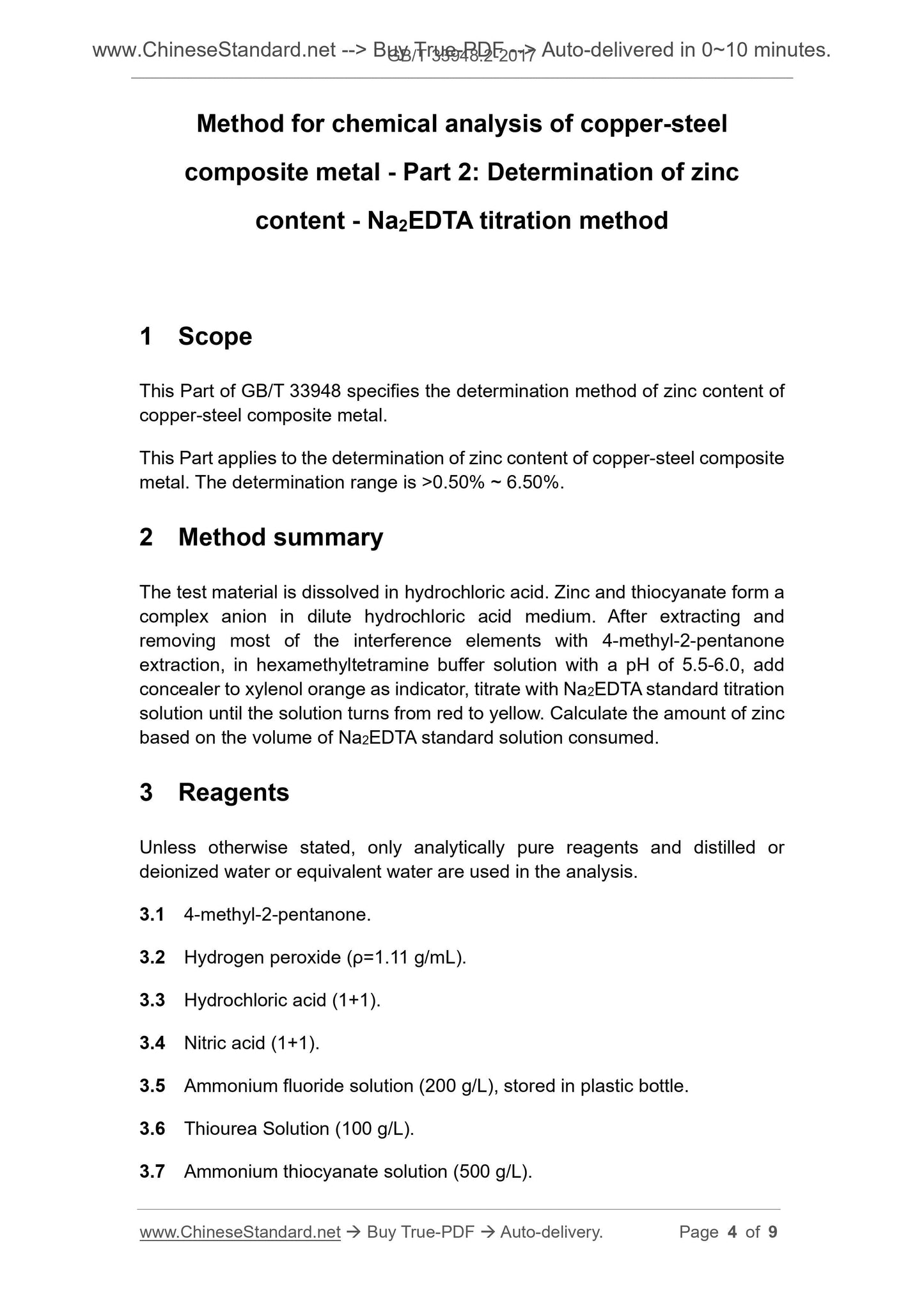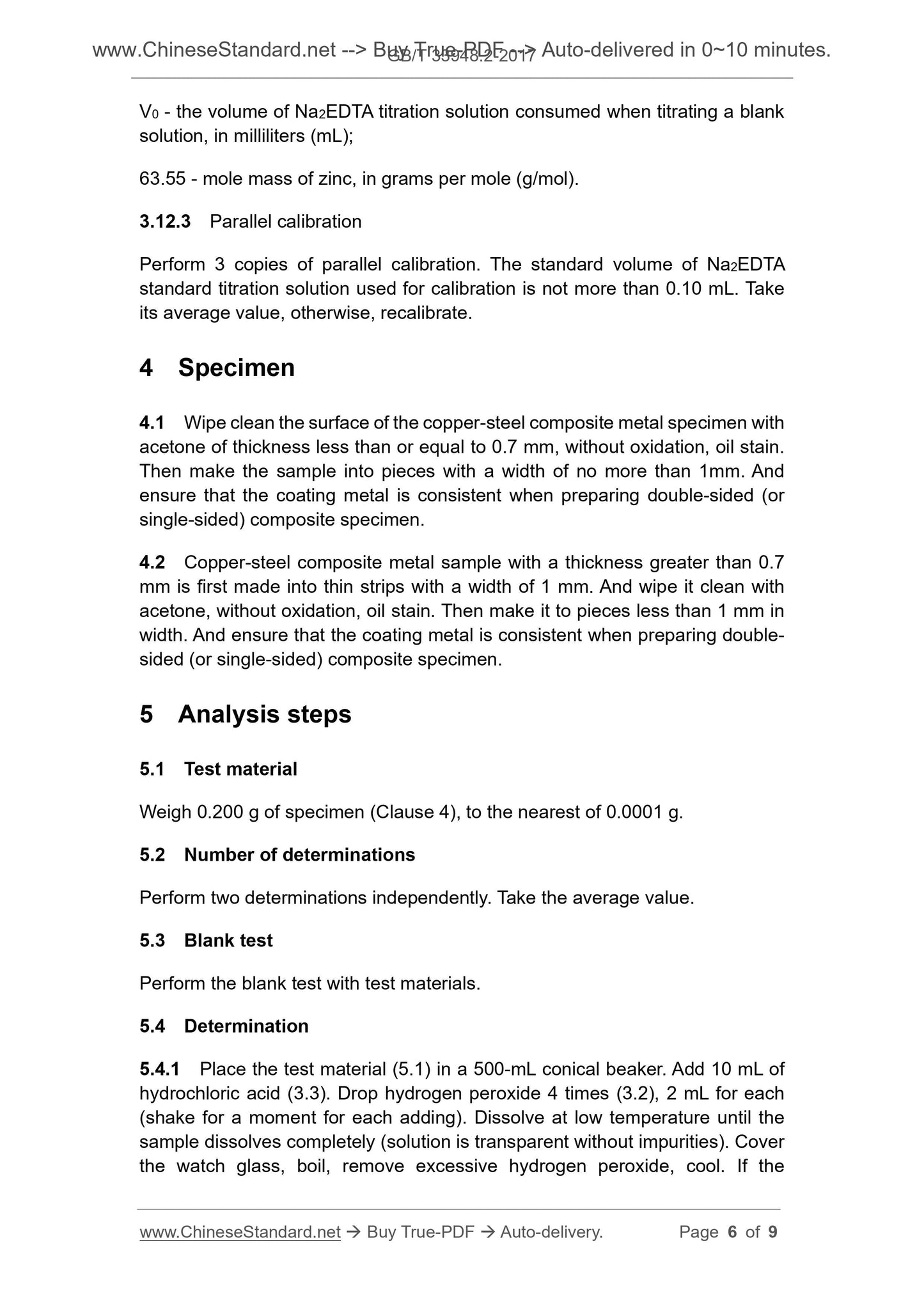1
/
of
4
www.ChineseStandard.us -- Field Test Asia Pte. Ltd.
GB/T 33948.2-2017 English PDF (GB/T33948.2-2017)
GB/T 33948.2-2017 English PDF (GB/T33948.2-2017)
Regular price
$90.00
Regular price
Sale price
$90.00
Unit price
/
per
Shipping calculated at checkout.
Couldn't load pickup availability
GB/T 33948.2-2017: Method for chemical analysis of copper-steel composite metal -- Part 2: Determination of zinc content -- Na2EDTA titration method
Delivery: 9 seconds. Download (and Email) true-PDF + Invoice.Get Quotation: Click GB/T 33948.2-2017 (Self-service in 1-minute)
Newer / historical versions: GB/T 33948.2-2017
Preview True-PDF
Scope
This Part of GB/T 33948 specifies the determination method of zinc content ofcopper-steel composite metal.
This Part applies to the determination of zinc content of copper-steel composite
metal. The determination range is >0.50% ~ 6.50%.
Basic Data
| Standard ID | GB/T 33948.2-2017 (GB/T33948.2-2017) |
| Description (Translated English) | Method for chemical analysis of copper-steel composite metal -- Part 2: Determination of zinc content -- Na2EDTA titration method |
| Sector / Industry | National Standard (Recommended) |
| Classification of Chinese Standard | H13 |
| Classification of International Standard | 77.120.30 |
| Word Count Estimation | 6,643 |
| Date of Issue | 2017-07-12 |
| Date of Implementation | 2018-02-01 |
| Issuing agency(ies) | General Administration of Quality Supervision, Inspection and Quarantine of the People's Republic of China, Standardization Administration of the People's Republic of China |
| Summary | This standard specifies the determination of zinc content in copper-steel composite metals. This standard is applicable to the determination of zinc content in copper-steel composite metals. Measurement range: and gt; 0.50% to 6.50%. |
Share







